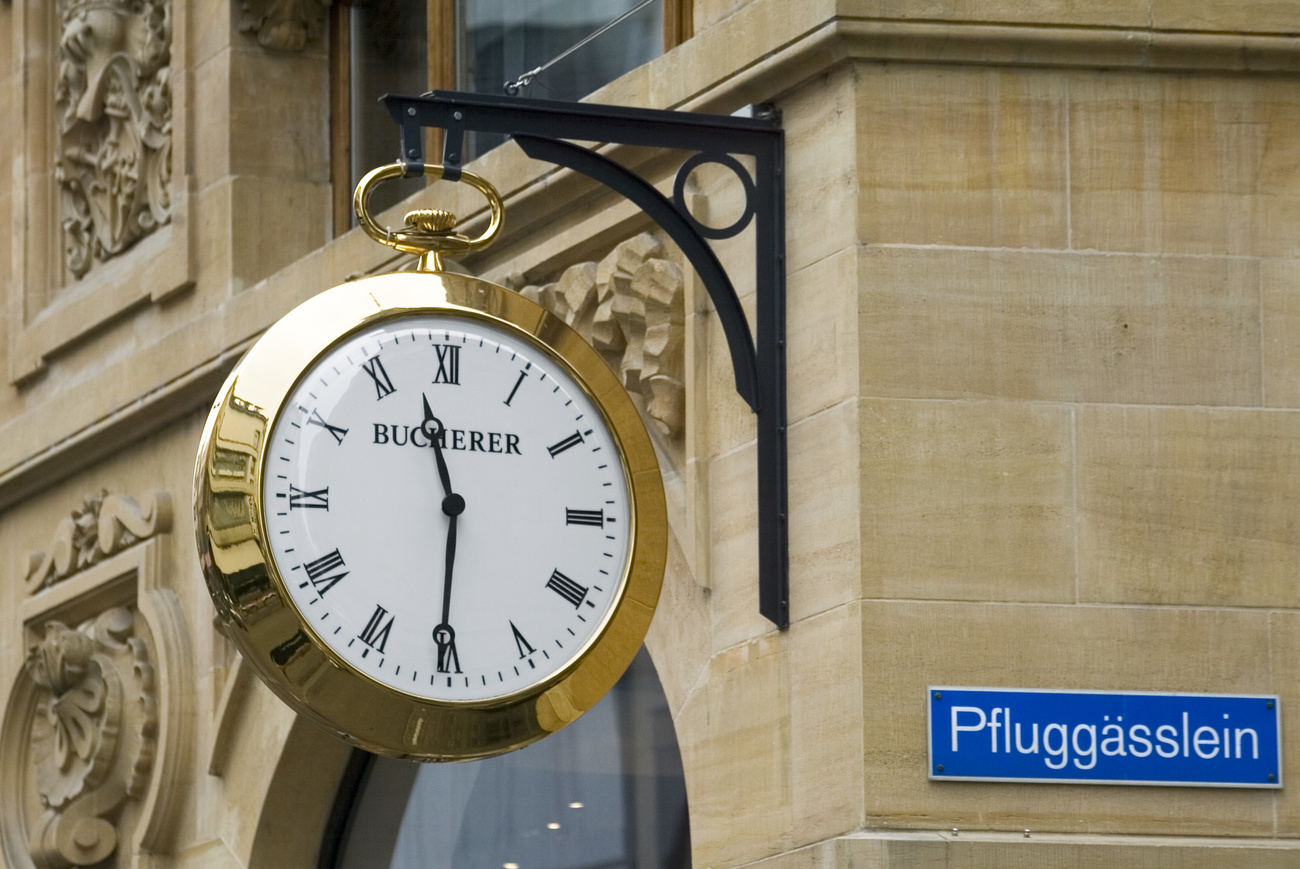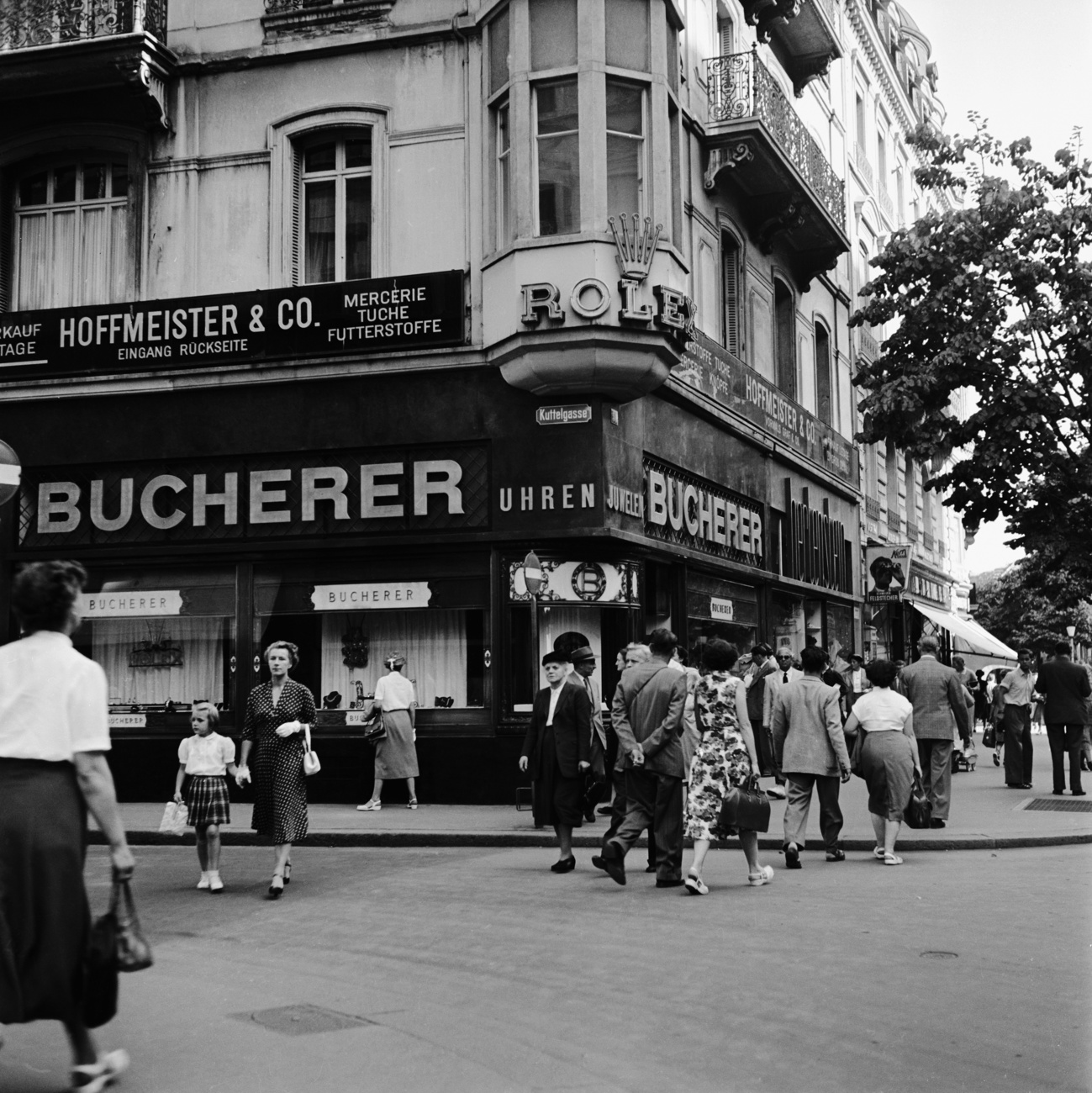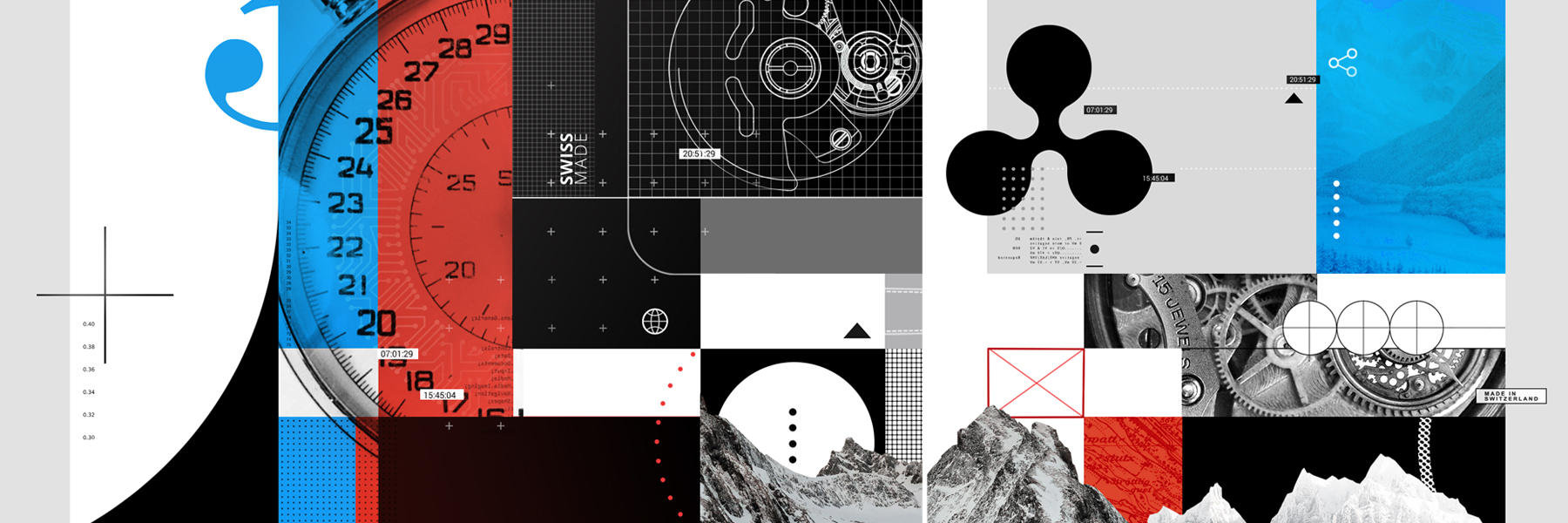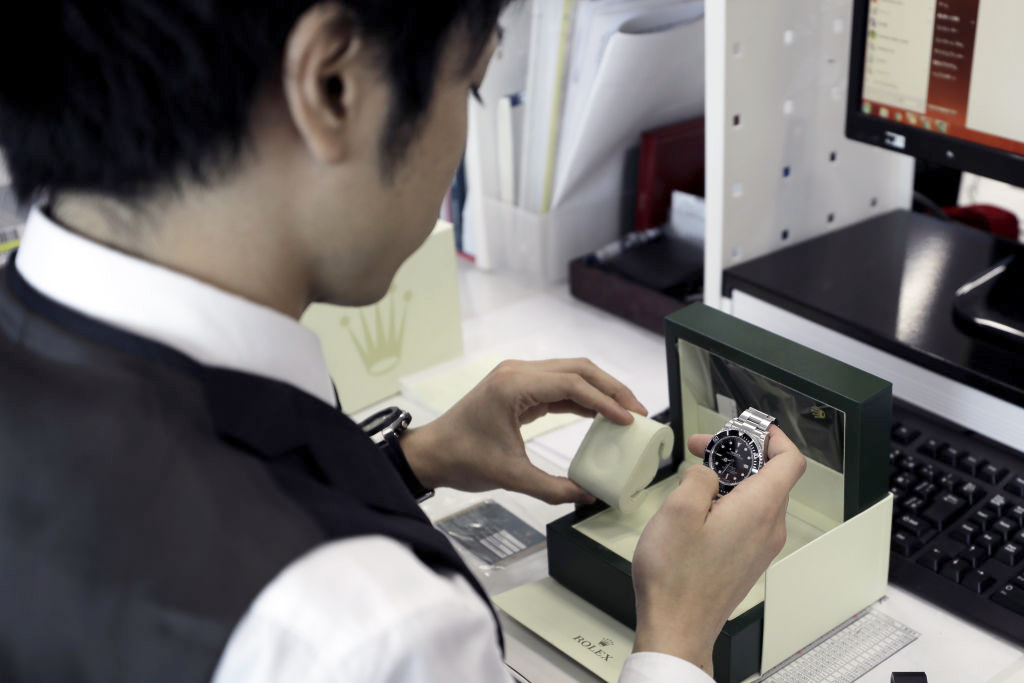Bucherer: a Swiss luxury brand ahead of its time

The announcement of the sale of the Swiss watch and jewellery retailer to Rolex has stunned the luxury world. Bucherer has a long history of springing surprises on the industry.
On August 25, Rolex announced its decision to acquire Bucherer – a shrewd move given that Bucherer’s 87-year-old chairman Jörg G. Bucherer, a third-generation scion of the family, did not have any direct descendants and was looking to sell the business.
The Lucerne-based firm has more than 100 sales outlets worldwide, over half of which distribute Rolex watches. Bucherer also sells luxury watches manufactured by Rolex’s competitors, as well as timepieces under its own brand Carl F. Bucherer. Thus, by acquiring Bucherer, Rolex is able gain control of its distribution network, access Bucherer’s VIP clients and obtain information on its competitors’ sales. When contacted, Bucherer did not wish to comment on the takeover.
SWI swissinfo.ch decided to dive into what makes Bucherer such a unique company.
Sniffing an opportunity
Bucherer’s origins go as far back as 1888 when Carl Friedrich Bucherer and his wife Luise opened a watch and jewellery shop in Lucerne. They wanted to seize the opportunity offered by an influx of wealthy tourists who came from all over Europe to admire the Alps and take in the fresh mountain air. The gamble paid off and they were able to open their second boutique only a few years later.
International expansion
To grow the business Carl Friedrich Bucherer got his two sons trained in the main trades: Ernst Bucherer learned the watchmaking business while Carl Eduard Bucherer trained in goldsmithing. In 1913, the two brothers joined the family business and quickly set out to open stores outside Switzerland starting with Berlin followed by Santiago in Chile. One of the drivers behind this international expansion was Carl Eduard’s wife Wilhelmina Bucherer-Heeb.
“Her smart business sense and entrepreneurial advice help to pave the way for developing the firm into a cosmopolitan brand,” says the company’s website.
She tragically died in a shipwreck when travelling from Argentina to Chile. The company paid homage to her memory by releasing a special edition watch in her name in 2005 limited to 70 pieces. Wilhelmina’s death put a spoke in international expansion plans and her husband and his brother returned to Lucerne and focused on growing in Switzerland. Bucherer would only venture abroad again in the 1980s when current chairman Jörg G. Bucherer expanded into Austria.

Investing in its own watches
In 1919, Carl Friedrich Bucherer made a pioneering decision. He became the first watch retailer to start manufacturing watches under his own name. The first watch collection was released in 1919 and aimed at women.
Bucherer was also one of the first watch brands to adopt watch straps. Pocket watches were still the more popular option among men at the time in the early 20th century. Wristwatches were seen as jewellery and still not a common accessory among women. Bucherer also came up with unique watch strap/bracelet designs of its own.
Today, Carl F. Bucherer’s watch collection boasts several models ranging from CHF3,100 to CHF145,000 (around $3,500 to $164,000).

Rolex partnership
Another turning point in the company’s history was Ernst Bucherer’s decision to sell watches made by a company owned by a certain Hans Wilsdorf. Wilsdorf had established his watch company in London in 1905 with his business partner Alfred Davis.
They sold watches under the name Wilsdorf & Davis that was later changed to Rolex in 1908 as it sounded better. Wildorf’s goal was to make timepieces that were both elegant and precise. Rolex caught the attention of the watch industry when its wristwatch was awarded a “Class A” precision certificate from Kew Observatory. The company relocated to Geneva in 1919 for tax reasons. Five years later a 100 year partnership with Bucherer was born.
“In 1924, Ernst Bucherer had the foresight to secure an agreement with Hans Wilsdorf to make the family-held Bucherer Group a major retail partner of Rolex,” says the Bucherer website.
Besides selling Rolex watches, a Bucherer sales outlet was the only place buyers could get their hands on special Rolex spoons. In order to acquire one, a client would have to purchase a Rolex watch.

Resisting Japanese quartz domination
In 1969, Japanese watch brand Seiko unveiled the world’s first quartz powered wristwatch: the Astron. It heralded what is known as the “quartz crisis” when Swiss mechanical watches were forced to compete against more accurate and much cheaper quartz watches. Between 1970 and 1983, the number of Swiss watch companies more than halved and two-thirds of the jobs in the industry disappeared.
Unlike many traditional Swiss brands, Carl F. Bucherer embraced quartz technology as part of its lineup. It was also one of around 20 Swiss firms that funded the development of a competing Swiss quartz movement, the Beta 21, that eventually proved unsuccessful.
Unique in-house peripheral movements
Most Swiss watches are powered by movements produced by third parties like ETA or Miyota because they are cheaper and have been proven to be reliable. The holy grail of any watch brand is to develop its own watch movement in-house.
Carl F. Bucherer did just that but went one further. It developed what is known as a peripheral rotor movement. A rotor is a watch component that rotates every time the wearer moves their wrist and powers the watch. Traditional rotors are bulky and cover more than half of the back of a movement. A peripheral rotor on the other hand runs along the periphery of the movement allowing for a thinner watch and a full view of the movement if the watch has a transparent back.
Carl F. Bucherer’s first peripheral movement CFB A1000 was released in 2008 and took three years to develop, followed by CFB A2000 (pictured above) and CFB T3000 that powers its most expensive watches like the CHF145,000 Manero Tourbillon Double Peripheral ParadiseExternal link.
So, what happens to the illustrious company now that Rolex will take over the reins? The future is a bit hazy but it appears that it is not a hostile takeover. Rolex has stated that the Bucherer will keep its name and that the business will continue to run independently. Jörg Bucherer will also remain as honorary president of the Bucherer group.
Rolex will likely continue to sell its watches through Bucherer outlets as before but will pocket the hefty margins the retailer was making on them. A comparison in pricesExternal link between watches sold by private sellers versus dealers indicates margins are in the region of a whopping 27% on average.

In compliance with the JTI standards
More: SWI swissinfo.ch certified by the Journalism Trust Initiative












You can find an overview of ongoing debates with our journalists here . Please join us!
If you want to start a conversation about a topic raised in this article or want to report factual errors, email us at english@swissinfo.ch.